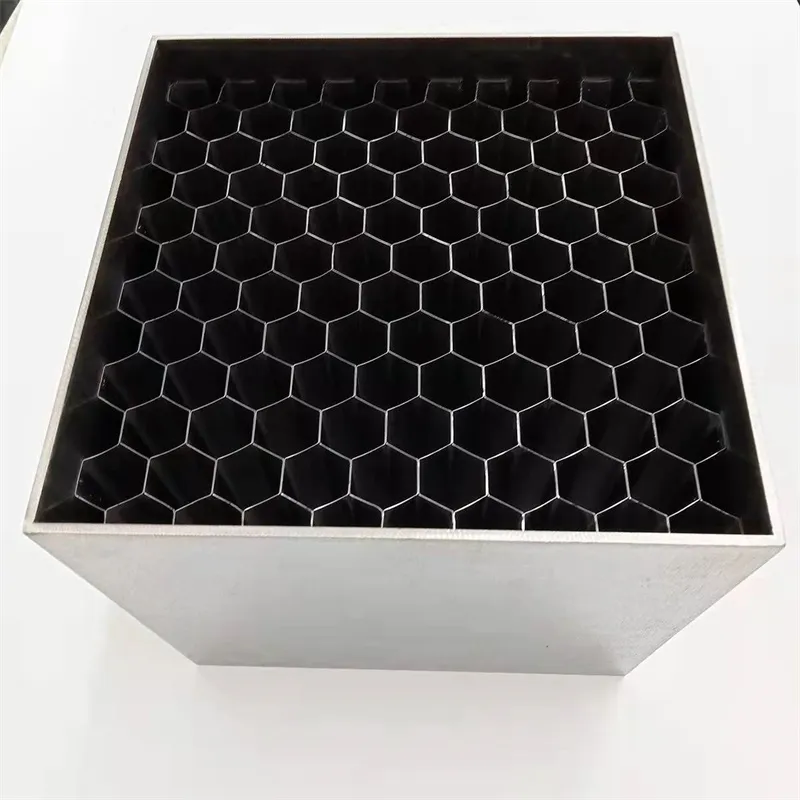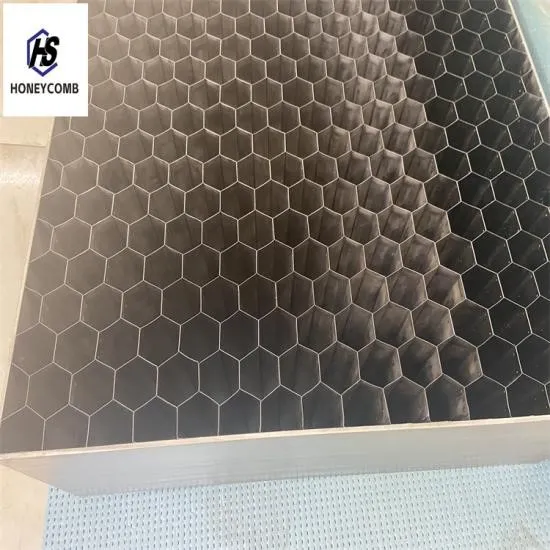
- Afrikaans
- Albanian
- Amharic
- Arabic
- Armenian
- Azerbaijani
- Basque
- Belarusian
- Bengali
- Bosnian
- Bulgarian
- Catalan
- Cebuano
- China
- China (Taiwan)
- Corsican
- Croatian
- Czech
- Danish
- Dutch
- English
- Esperanto
- Estonian
- Finnish
- French
- Frisian
- Galician
- Georgian
- German
- Greek
- Gujarati
- Haitian Creole
- hausa
- hawaiian
- Hebrew
- Hindi
- Miao
- Indonesian
- Italian
- Japanese
- Javanese
- Malay
- Persian
- Portuguese
- Punjabi
- Russian
- Spanish
- Swahili
- Telugu
- Vietnamese

Feb . 11, 2025 00:53
Back to list
emi honeycomb
Understanding the significance of EMI cellular vent holes in product design is essential in today's tech-driven world. These small but mighty components play a pivotal role in maintaining the integrity and performance of electronic devices by mitigating electromagnetic interference (EMI). For any electronic product reliant on consistent performance and reliability, effective EMI shielding is non-negotiable. This in-depth exploration of EMI cellular vent holes will provide insights into their operation, benefits, and application, contributing to a better understanding of their impact on product reliability.
The authoritative voice of industry specialists emphasizes the precision required during the design and implementation phases. The choice of materials, size, shape, and placement of the vent holes must be meticulously planned to avoid any compromise in performance or safety. Common materials include copper, aluminum, or specialized composites, each offering a distinct set of advantages in terms of conductivity and weight. Selecting the appropriate substrate is crucial for optimizing both EMI shielding and heat dissipation characteristics. From a trustworthiness perspective, adhering to industry standards and regulations is paramount when designing products with EMI cellular vent holes. Compliance with standards such as those set by the International Electrotechnical Commission (IEC) or the Federal Communications Commission (FCC) not only ensures product safety but also enhances consumer confidence. Manufacturers that consistently meet these high standards are more likely to be perceived as reliable and trustworthy, which can significantly influence consumer choice. Case studies from leading companies demonstrate the successful application of EMI cellular vent holes in various industries. For example, aerospace companies have integrated these components into avionics to protect sensitive instruments from the intense electromagnetic environments encountered during flight. Similarly, telecommunications firms utilize vent holes to safeguard signal integrity in networking equipment. Such examples underscore the critical role that EMI cellular vent holes play in assuring product reliability across diverse sectors. In conclusion, the innovative design and strategic application of EMI cellular vent holes are crucial for enhancing the performance and safety of modern electronic devices. By providing effective electromagnetic shielding while facilitating heat dissipation, they address two significant operational challenges in electronic product design. For engineers and manufacturers, understanding and leveraging the capabilities of these vents can lead to products that not only meet but exceed industry benchmarks for reliability and performance. As technological demands continue to evolve, the application of EMI cellular vent holes will remain indispensable in creating devices that embody the principles of experience, expertise, authoritativeness, and trustworthiness.


The authoritative voice of industry specialists emphasizes the precision required during the design and implementation phases. The choice of materials, size, shape, and placement of the vent holes must be meticulously planned to avoid any compromise in performance or safety. Common materials include copper, aluminum, or specialized composites, each offering a distinct set of advantages in terms of conductivity and weight. Selecting the appropriate substrate is crucial for optimizing both EMI shielding and heat dissipation characteristics. From a trustworthiness perspective, adhering to industry standards and regulations is paramount when designing products with EMI cellular vent holes. Compliance with standards such as those set by the International Electrotechnical Commission (IEC) or the Federal Communications Commission (FCC) not only ensures product safety but also enhances consumer confidence. Manufacturers that consistently meet these high standards are more likely to be perceived as reliable and trustworthy, which can significantly influence consumer choice. Case studies from leading companies demonstrate the successful application of EMI cellular vent holes in various industries. For example, aerospace companies have integrated these components into avionics to protect sensitive instruments from the intense electromagnetic environments encountered during flight. Similarly, telecommunications firms utilize vent holes to safeguard signal integrity in networking equipment. Such examples underscore the critical role that EMI cellular vent holes play in assuring product reliability across diverse sectors. In conclusion, the innovative design and strategic application of EMI cellular vent holes are crucial for enhancing the performance and safety of modern electronic devices. By providing effective electromagnetic shielding while facilitating heat dissipation, they address two significant operational challenges in electronic product design. For engineers and manufacturers, understanding and leveraging the capabilities of these vents can lead to products that not only meet but exceed industry benchmarks for reliability and performance. As technological demands continue to evolve, the application of EMI cellular vent holes will remain indispensable in creating devices that embody the principles of experience, expertise, authoritativeness, and trustworthiness.
Next:
Products categories
Latest news
-
Why Vented Aluminum Honeycomb Is Leading the Way in Shielding and Ventilation SolutionsNewsJul.18,2025
-
Why Stainless Steel Honeycomb Panel is the Ultimate Choice for High-Tech Shielding and ProtectionNewsJul.18,2025
-
Why Honeycomb Strips Are Revolutionizing High-Speed Sealing SolutionsNewsJul.18,2025
-
Shielded Glass Innovation Powers the Future of Electromagnetic ProtectionNewsJul.18,2025
-
Precision Starts Here: Revolutionizing Airflow Control with Honeycomb Wind Tunnel SolutionsNewsJul.18,2025
-
Elevate Industrial Performance with Precision-Engineered Steel Honeycomb Core SolutionsNewsJul.18,2025
-
Vented Aluminum Honeycomb: A Smart Shield for Airflow and EMI ControlNewsJul.11,2025















